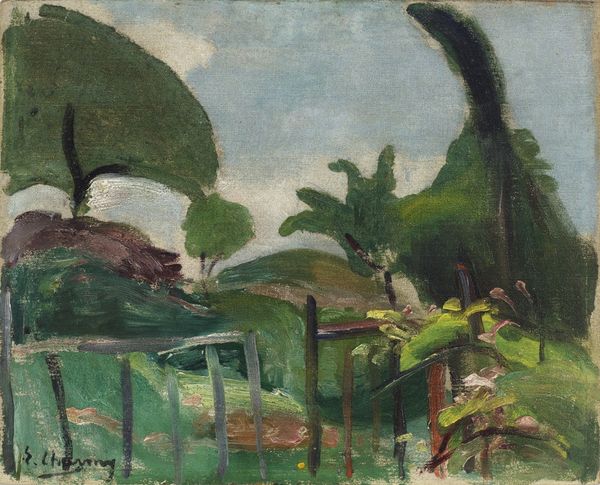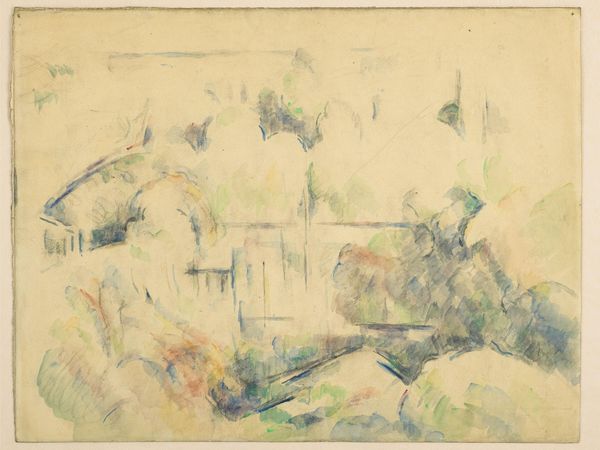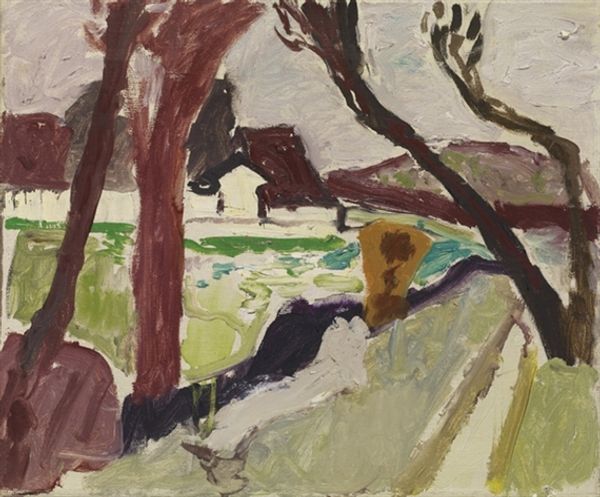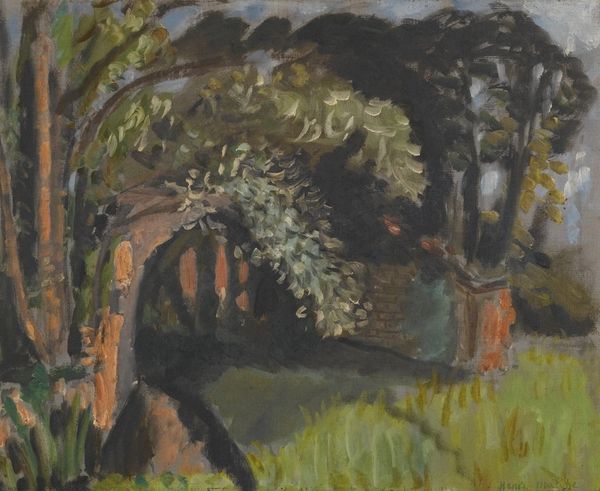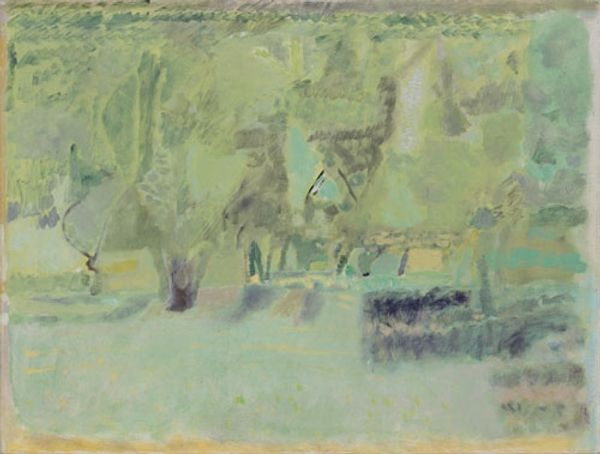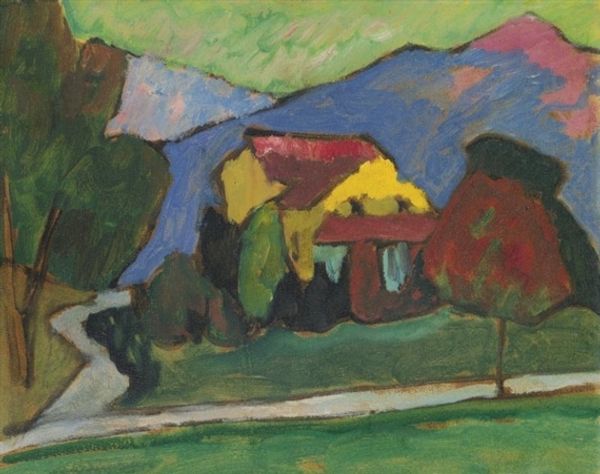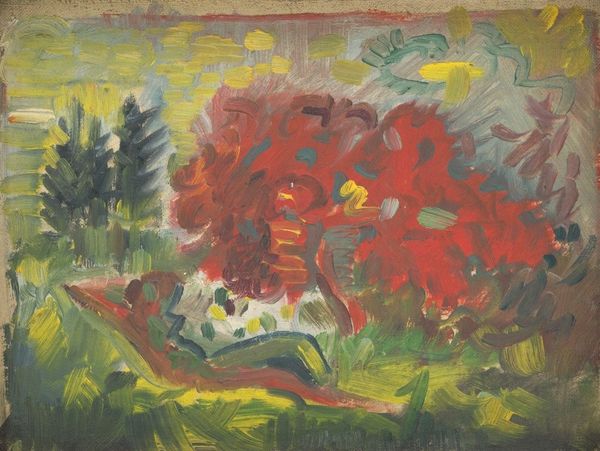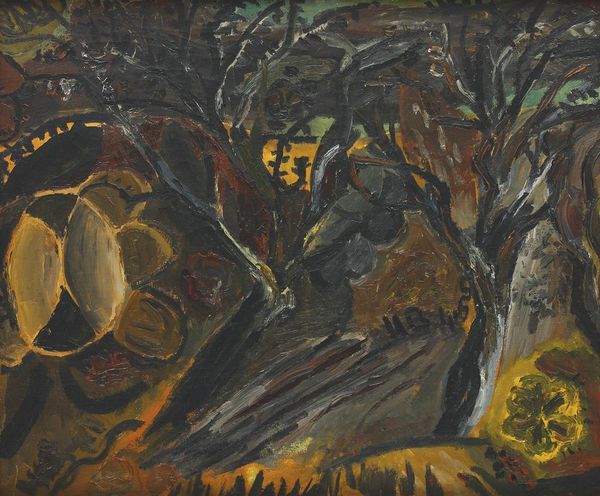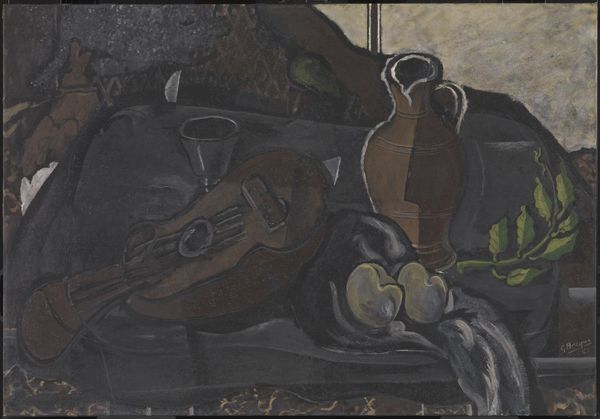
Dimensions: 61 cm (height) x 71 cm (width) (Netto), 67.6 cm (height) x 77.5 cm (width) x 5.4 cm (depth) (Brutto)
Editor: So, this is Harald Giersing’s “Landscape after Sunset” from 1923, made with oil paints. It’s got this heavy, almost brooding feeling. What do you see in the visible brushstrokes and the materiality of the painting itself? Curator: Giersing’s application of oil-paint here is clearly crucial. See how he abandons a smooth finish for visible marks. What does it tell us about art making at this time, in terms of labor, and value? It’s almost as if he wants to show us the means of production itself, the physical act of applying paint. Editor: I see what you mean! It almost demystifies the artwork, bringing it back down to earth by showing us the physical process of its creation. Does this challenge of artistic traditions influence art as commodity, art and capital, and market demand at that moment? Curator: Precisely! By showcasing the labor, he’s also pointing to its absence in other, more ‘polished’ works, questioning the elite status of "high art." In what ways do you feel this piece represents Giersing's challenge against those types of notions? Editor: I guess it moves art from this realm of inaccessible skill into the realm of human work that’s tangible. I wouldn’t necessarily call it “pretty," but the way the painting feels feels human. Do you think other plein-air paintings have tried this? Curator: Plein-air paintings often emphasize direct observation, but Giersing takes it a step further, forcing us to confront the physical properties of his medium. That choice brings material reality, and by extension labour and social contexts, into sharp focus, blurring that high art and craft boundary. How do we consume art now, with this knowledge? Editor: This gives me a whole new way to view impressionistic landscapes. Seeing the brushstrokes as a statement about the art world is something I hadn't thought of. Thank you. Curator: Absolutely. Hopefully you'll carry forward an increased focus on materiality as well as social contexts when evaluating the visual arts moving forward.
Comments
No comments
Be the first to comment and join the conversation on the ultimate creative platform.
